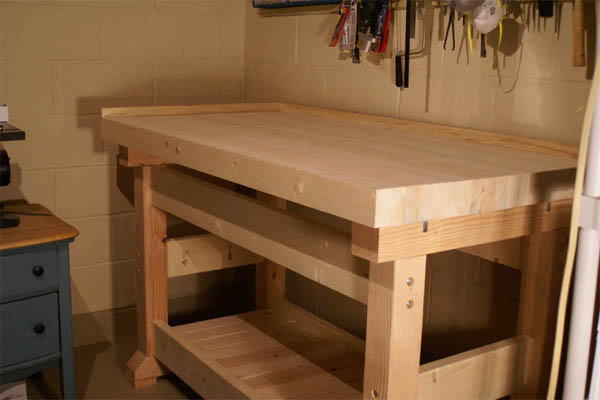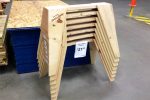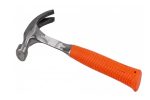The Workbench: Heartbeat of the Woodworker’s Craft
In woodworking, a workbench is a specialized table-like structure designed for various woodworking tasks.
It serves as a stable platform for woodworkers to perform activities such as cutting, shaping, assembling, and finishing wood and other materials.
Workbenches are essential fixtures in woodworking workshops and are specifically tailored to provide a flat, sturdy, and functional surface that facilitates precise and efficient woodworking.
Let’s explore the profound significance of the workbench in the world of woodworking.
The Anatomy of a Workbench
A workbench is more than just a flat surface; it is meticulously designed for functionality, stability, and versatility. Its key components include:
1.) Top Surface
Crafted from hardwood like beech or maple, the top surface of the workbench is flat, durable, and resistant to wear and tear.
It provides a robust platform for various woodworking tasks, from carving to assembly.
2.) Base
The base of the workbench supports the entire structure.
It is usually made from solid wood and is designed for stability, ensuring that the bench does not wobble or vibrate during woodworking activities.
3.) Vises and Clamps
Workbenches often feature vises and clamps, allowing woodworkers to secure their projects firmly.
This immobilization is crucial for tasks like sawing, planing, and chiseling, ensuring accuracy and safety.
4.) Storage
Many workbenches come with built-in storage solutions like drawers, shelves, and cabinets.
These storage spaces are convenient for organizing tools, keeping the workspace clutter-free, and enhancing efficiency.
The Role of the Workbench in Woodworking
1.) Precision and Stability
The flat, stable surface of the workbench provides a reliable platform for precise measurements and intricate cuts.
Woodworkers rely on the workbench to maintain the integrity of their creations, ensuring every joint fits seamlessly and every cut is accurate.
2.) Versatility
A well-designed workbench accommodates various woodworking techniques.
From hand tool usage like chiseling and hand planing to power tool operations, the workbench supports a wide array of tasks, making it a versatile hub for creativity.
3.) Safety
By offering a secure space to fasten projects with vises and clamps, the workbench enhances safety.
Woodworkers can concentrate on their tasks without worrying about the project slipping or moving unexpectedly.
4.) Assembly and Finishing
Workbenches serve as ideal surfaces for assembling intricate parts and applying finishes.
Their flat, level tops ensure that assemblies align correctly, and finishes are applied uniformly, resulting in polished, professional-looking projects.
Types of Workbenches
1.) Traditional Woodworking Bench
These benches are crafted from solid hardwood and are often customized to a woodworker’s specific needs.
They feature vises, dog holes, and other accessories tailored to traditional woodworking techniques.
2.) European-Style Workbench
European workbenches often have thick, heavy tops and integrated storage solutions.
They are known for their durability and versatility, accommodating a range of woodworking styles.
3.) Portable Workbenches
Designed for those with limited space or for on-the-go woodworking, portable workbenches are lightweight and foldable.
They offer basic functionality and are perfect for DIY enthusiasts and beginners.
4.) Hybrid Workbenches
Combining elements of traditional and modern designs, hybrid workbenches offer the best of both worlds.
They often feature a solid wood top, sturdy base, and integrated storage, catering to a wide range of woodworking tasks.
Conclusion
In the world of woodworking, the workbench is not just a piece of furniture; it is a sanctuary where creativity meets craftsmanship, where raw materials are transformed into timeless creations.
It is a testament to the woodworker’s skill, precision, and passion, embodying the very essence of the art.
Every stroke of the chisel, every pass of the plane, and every meticulous measurement find their foundation on the steadfast surface of the workbench.
It is here, amidst the aroma of sawdust and the hum of tools, that woodworking dreams take shape and come to life.
The workbench, standing as the heartbeat of the woodworker’s craft, remains an enduring symbol of dedication, expertise, and the pursuit of perfection.

Don Kerr spent many years honing his skills as a DIY woodworker. He finds immense joy in not only creating remarkable pieces but also in generously sharing his knowledge. Connect with him via group.



